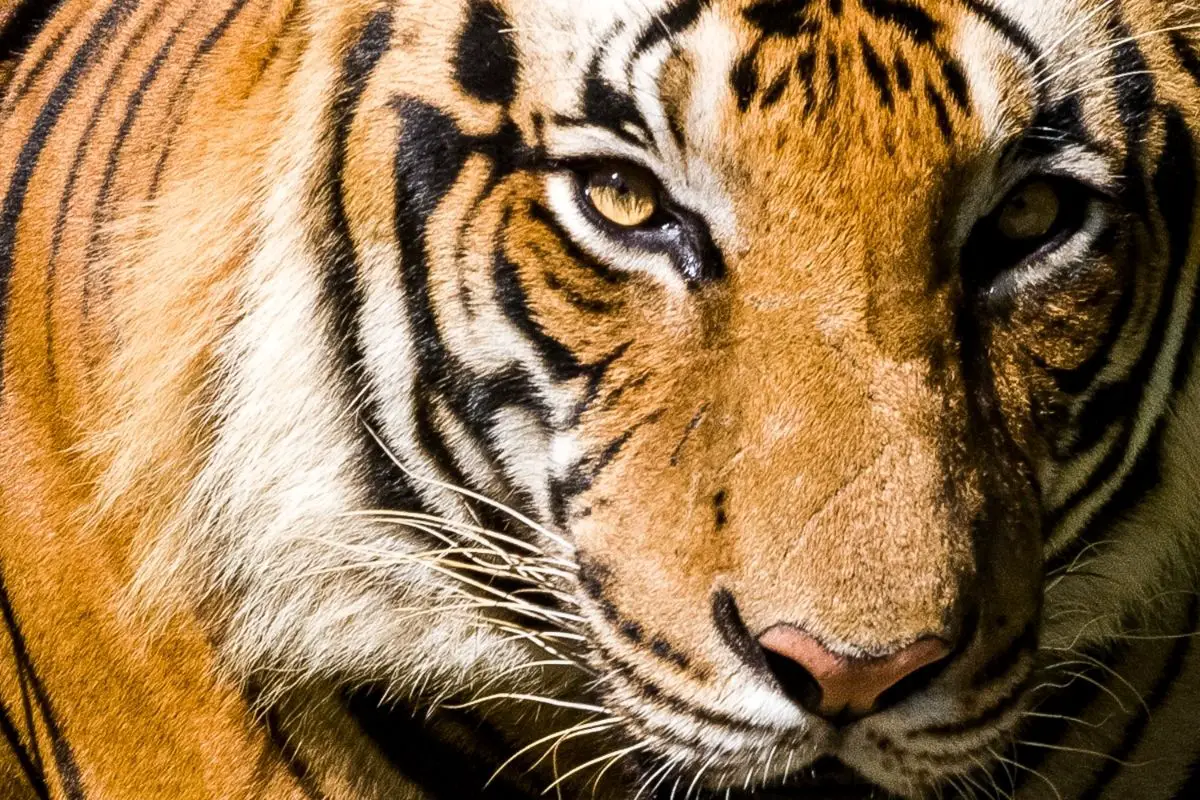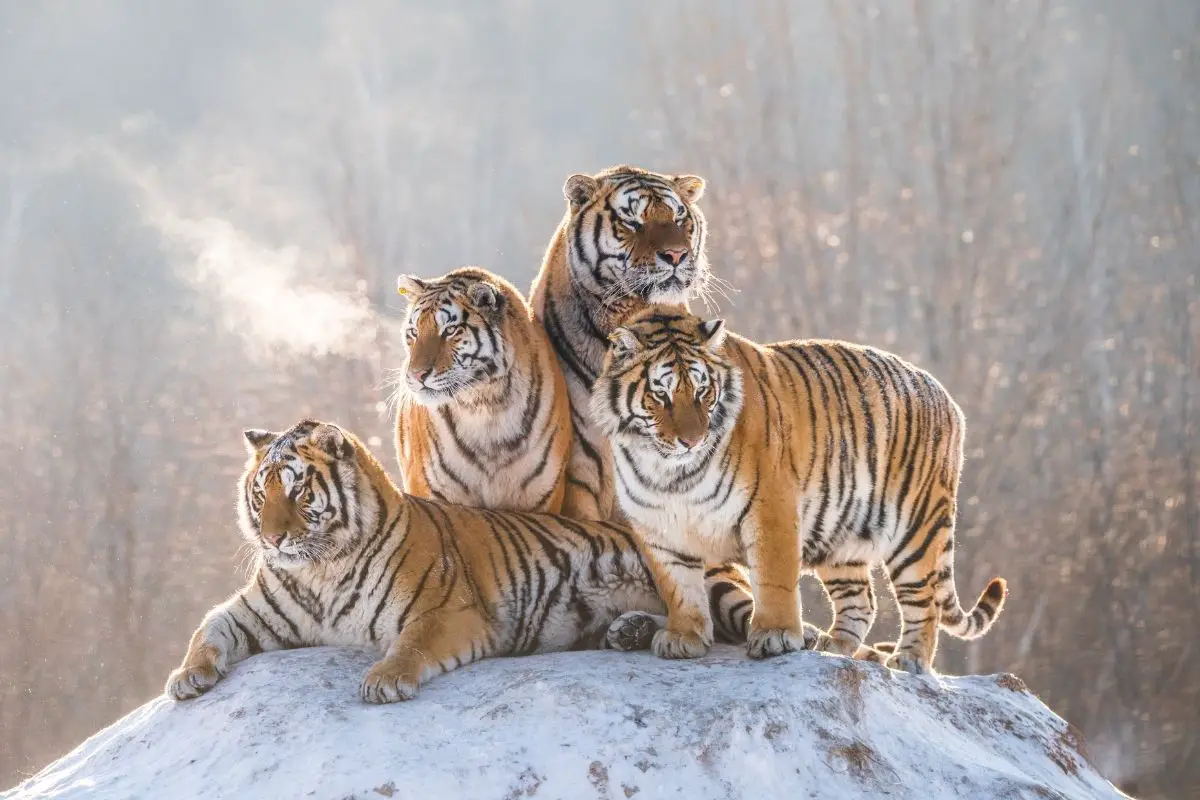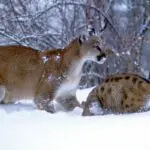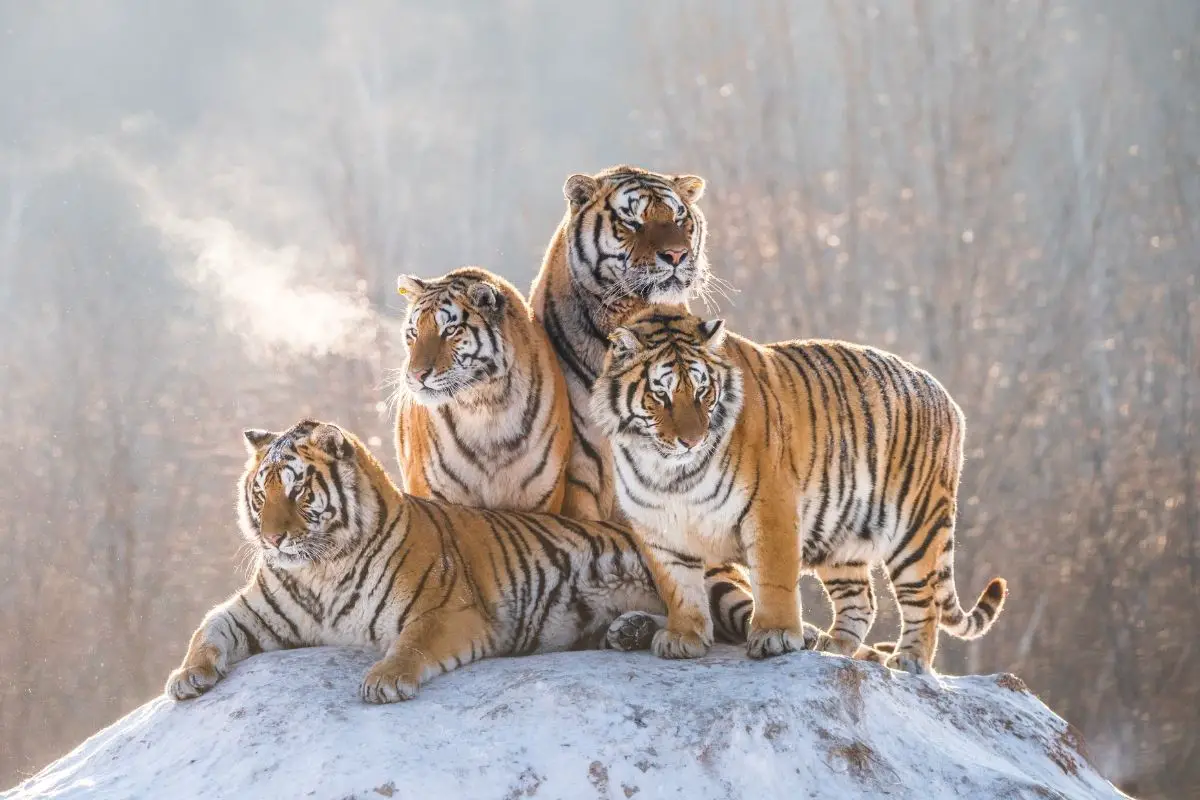Big cats are amazing creatures but they all communicate in different ways, despite how similar their biologies and behaviors are.
One common misconception is that people often assume that all big cats are capable of releasing a loud roar like we see in the movies and that they can purr like our own domestic cats.
However, communication varies from species to species and tigers are no different. They have their own unique ways of communicating that differ from their big cat cousins – so how do tigers communicate?
Here we are going to be taking a closer look at tiger communication including chuffing and their ways of vocal communication.
So, if you want to understand more about what types of noises a tiger makes, this is the place for you!
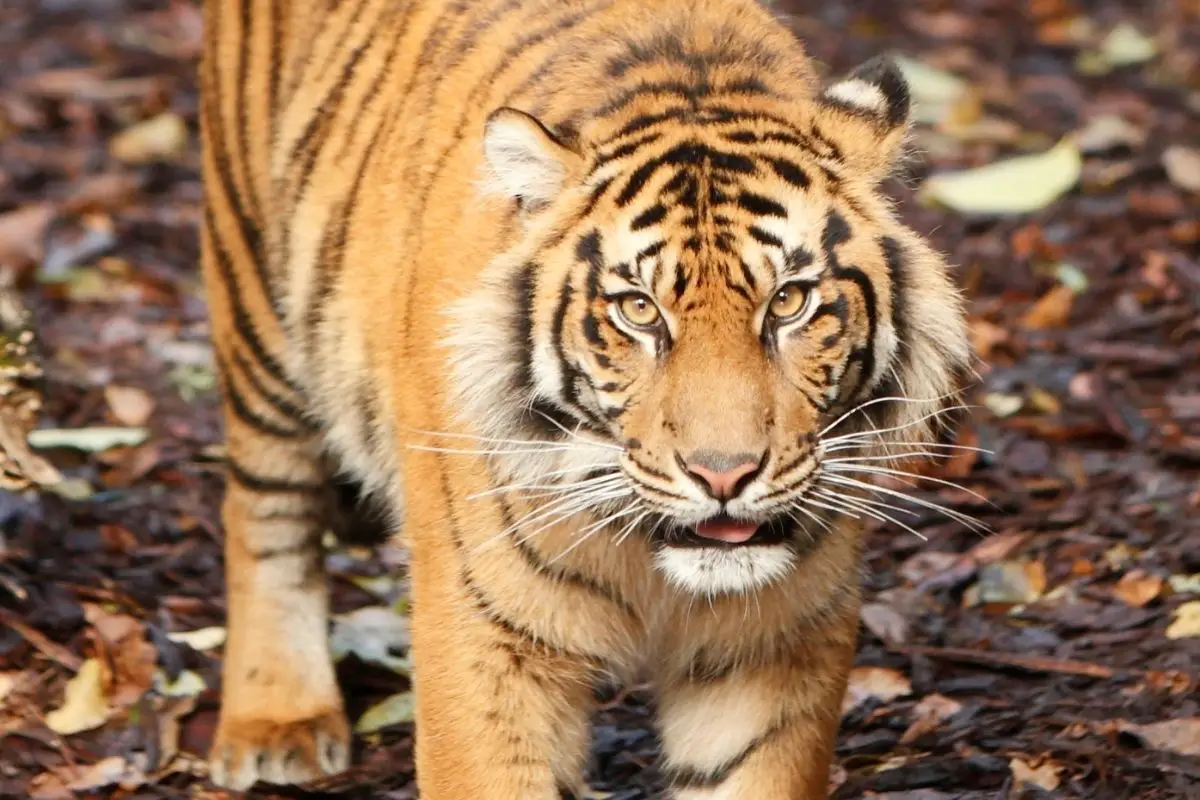
What Sound Do Tigers Make?
Tigers, like other big cats, are capable of producing a wide range of different sounds to vocalize their thoughts and emotions.
However, they aren’t capable of producing some of the noises you may hear in movies – most of the time, lion roars and growls are used instead because they are louder and longer.
Tigers can roar to communicate with others over long distances, such as when they want to signal to others that they are ready for mating or to call over their young.
However, their roars are short, less loud and less ‘frightening’ than other big cats – and it doesn’t come across as very impressive when heard on the big screen.
So, actual tiger noises are usually swapped out for something more intimidating when a tiger is present in a movie.
The same goes for tiger growls. A lot of people say they sound more like a cough than a growl because of how short in length and how faint in volume they are.
Also, tigers do not always growl when they feel aggressive – they will also hiss or snarl.
This is because the muscles around a tiger’s larynx are a lot weaker than seen in other big cats, which means they produce shorter vocal noises. This also means that tigers are incapable of purring.
Another mistake often made in movies is that the sounds of domestic cats purring are placed to signal to audiences that tigers (or other big cats) are feeling happy or friendly.
In the real world, tigers cannot purr but they do make their own unique sound to communicate their friendliness or pleasure when with other tigers – chuffing!
What Is Chuffing In Tigers?
Chuffing is the vocal communication tigers make when they are happy.
When they are feeling friendly with mates or cubs, or just having some fun swimming in a pool or playing with an enrichment toy in a zoo, they will chuff to display these feelings.
Sometimes, a tiger will chuff as a form of greeting, even to their zookeepers.
Chuffing is a unique noise not only seen in tigers, but in other big cats like jaguars and clouded leopards.
Some biologists may call this chuffing noise a ‘prusten’ instead but the most common name for this noise is a chuff – because that’s the onomatopoeia of what this noise sounds like.
Chuffs are low frequency so they can only be heard when in close range to a tiger.
They happen when the tiger keeps its mouth closed and air blows harshly out of the nostrils, kind of like a very breathy snort. This noise is also often accompanied with a bob of the tiger’s head too.
Not all big cats can produce a prusten, but tigers are especially adapted to do this because their vocal folds are especially thick.
While this prevents them from being able to purr like domestic cats, they can still signal the same emotions through a chuff instead.
Why Don’t More People Know About Chuffing?
Movies and television shows are the worst for making people think that all big cats can purr just like domestic cats when in reality, each species makes their own unique vocal communication.
The reason behind this is probably because the directors of these movies and shows use it as a shortcut to convey certain emotions and messages to their audience.
Most people are already familiar with domestic cats and understand that when they purr, this is a sign that they are happy – and because big cats are so similar in biology to domestic cats, movie makers superimpose purring noises to signal to their audiences that the big cat on screen is feeling happy.
Because of this, many people assume that big cats can purr and make similar noises to their own pet cats at home.
While big cats are biologically similar to domestic cats, there is enough difference between each species to result in different vocal communications.
While it would make sense to assume that a tiger can purr just like a domestic cat, just like how wolves can bark just like domestic dogs, this is not true.
Conclusion
So, tigers make a noise known as ‘chuffing’ whenever they feel happy and friendly.
Most tigers use chuffing as a friendly form of communication. Situations when a tiger may chuff includes greeting other tigers, initiating mating, or when a mother tiger greets her cubs.
Because tigers use it as a form of communication with other tigers (or humans, as they have been seen chuffing to greet their zookeepers), they are rarely seen chuffing when alone but it can be a sign of contentedness or happiness.
Tigers communicate in lots of different ways and due to movies and TV shows, we often have the wrong impression on how they communicate.
Tiger’s don’t really roar or growl like they do in movies; their thick vocal folds makes it difficult for them to produce long, loud roars like lions.
So, tigers usually communicate with other tigers through short roars to signal their presence, growls and hisses when they are feeling aggressive or threatened, and chuffles when they are feeling friendly.
This is how tigers speak to one another in their own unique language!
- Sink Your Teeth Into This: Analyzing the Powerful Lion Bite Force - September 8, 2023
- Siberian Tigers: Everything You Need To Know - September 4, 2023
- Do Lions Eat Humans? Understanding Lion Aggression and Risks - September 4, 2023

